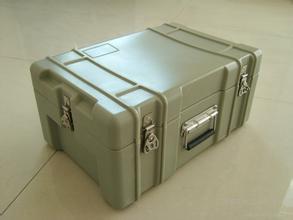Rotomolding products have some obvious advantages, but the manufacturing technique still has some limitation. For instance, the products are easily to have bubbles internally and cavities externally, as well as bending, shrinkage and discoloration. These problems are not only influences appearance and performance of products, but also prone to form the structural stress and cause the deformation. Therefore, it’s significant to make researches about these problems, strength the scientific design and improve the quality of rotomolding products.
1.Bubbles and perforations
The formation of bubbles is attribute to the air which brought by powder partials when melt and bond. In industrial production, the heating can be used as a method to reduce or eliminate bubbles in products. When the temperature is increasing, the material viscosity will be decreased and the bubbles are much easier to diffuse or disappear. This method is effective but has some side effects. For instance, the increasing temperature will prolong the manufacturing time, decrease the working efficiency and mechanical properties of products, particularly, the impact strength.
2. The impact strength
There are several factors that influence the impact strength of rotomolding products, for example, heating temperature and time, cooling speed, particle size, mold and material etc. Among these factors, heating temperature and time are main factors. When the temperature is too low to fully melt the material, it will reduce the impact strength. When the temperature is too high, it will lead to the degradation of plastic which will also cause the decreasing of impact strength. The Melt Flow Rate (MFR) has direct relationship with the impact strength; the number of MFR is dropped when the impact strength is decreased. Thus, MFR can be an indicator for impact strength of rotomolding products.
3. Shrinkage and deformation
Shrinkage and deformation are also defects of rotomolding products, which are formed by residual stress during cooling. It was proved that through different cooling method instead of single method can reduce the residua stress. On the other hand, it can also fill with compressed air into molds and prevent products to deform; this method can also achieve cooling effects. What’s more, this method will change the cooling mechanism and reduce the residual stress so that prevent the shrinkage and deformation. Actually, when fill with 0.11MPa of air during cooling can largely eliminate the shrinkage and deformation. Besides, the structural design also plays an important role on the quality of rotomolding products. Inappropriate structure design may cause the stress on products, and influence the appearance and stability of rotomolding products. Manufacturers can apply modern design technology, such as CAD, computer simulation design and optimization design to constantly improve the design of rotomolding products.
